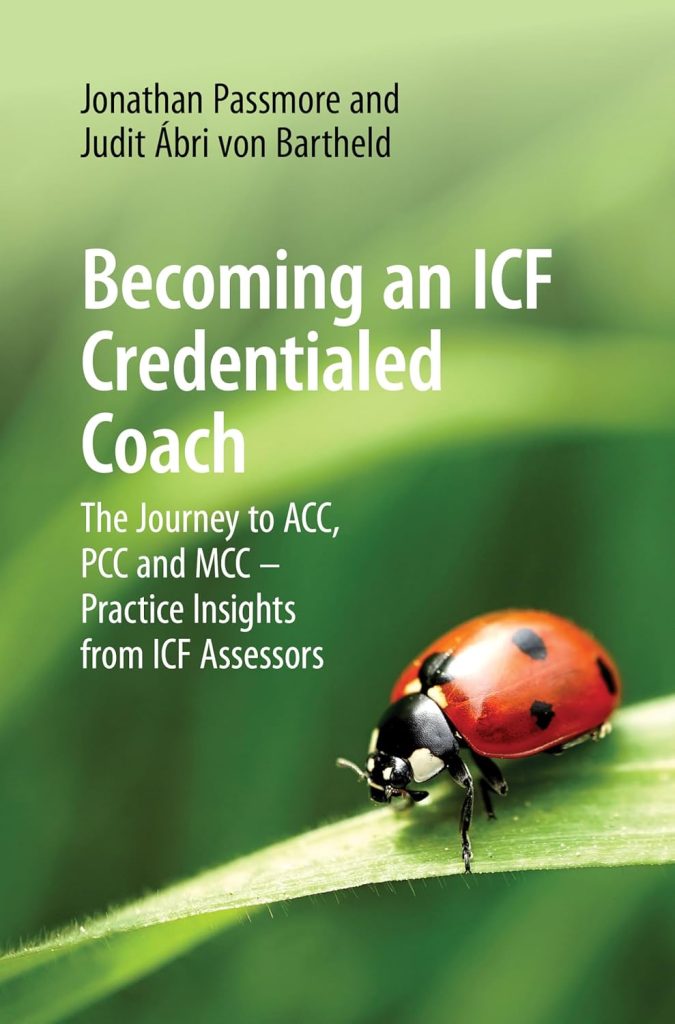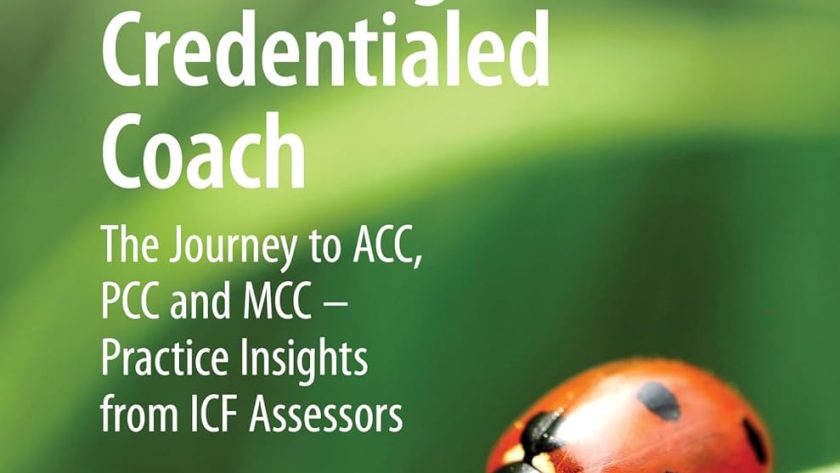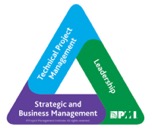Book Review of Becoming an ICF Credentialed Coach

by Jonathan Passmore and Judit Ábri von Bartheld
Summary – The sections and chapters of the book include:
Section 1: ICF BARS and Markers
Section 1 Introduction
Chapter 1: An Assessor’s Perspective on the ICF BARS – Francine Campone
Chapter 2: An Assessor’s Perspective on the ICF PCC Markers – Giuseppe Totino and Ann Fogolin
Section 2: ICF Competencies
Section 2 Introduction
Chapter 3: Exploring Competency 1: Demonstrates Ethical Practice –Frances Penafort, Anita Gupta, João Luiz Pasqual and Jonathan Passmore
with contributions from Svea van der Hoorn, Sandra L. Stewart and Lola Chetti
Chapter 4: Exploring Competency 2: Embodies a Coaching Mindset – Peter J. Reding, Peter Hayward and Eileen Laskar
Chapter 5: Exploring Competency 3: Establishes and Maintains Agreements – Judit Ábri von Bartheld, Karen Burke and Kaveh Mir with contributions from Fran Fisher
Chapter 6: Exploring Competency 4: Cultivates Trust and Safety – Chérie Carter-Scott and Michael Pomije
Chapter 7: Exploring Competency 5: Maintains Presence – Svea van der Hoorn and Cindy Muthukarapan with contributions from Philippe R. Declercq
Chapter 8: Exploring Competency 6: Listens Actively – Tracy Tresidder, Osama Al-Mosa and Johan van Bavel
Chapter 9: Exploring Competency 7: Evokes Awareness – Karen Foy, Leda Turai, Elena Espinal and Ram S. Ramanathan
Chapter 10: Exploring Competency 8: Facilitates Client Growth – Meryl Moritz, Dalia Nakar and Keiko Hirano
Section 3: Masterful Insights
Section 3 Introduction
Chapter 11: Reflective Practice – Jonathan Passmore
Chapter 12: Dare to be LAZY – Judit Ábri von Bartheld
Chapter 13: Questions at the Heart of Coaching – Elena Espinal
Chapter 14: Pause Gives More Time than it Takes – Janet Harvey
Chapter 15: Walking Home to Self – Karen Foy
Chapter 16: Learning for Transcripts and Recordings – Carly Anderson
Chapter 17: Trust and Safety – Michael Pomije
Chapter 18: The Trap of the “Knower” – Michael Stratford
Chapter 19: The Polarity between the Science and Art – Osama Al-Mosa
Chapter 20: Make Your Coaching Client Do the Work! – Peter J. Reding
Chapter 21: Dancing with Polarities – Ram S. Ramanathan
Chapter 22: A Beginner’s Mind – Dalia Nakar
Chapter 23: Graceful Steps to Mastery – Meryl Moritz
Chapter 24: Learning from Feedback – Sandra L. Stewart
Chapter 25: Focusing on Exploration, Partnership and Intentionality – Damian Goldvarg
Chapter 26: State – Leda Turai
Chapter 27: The Dynamic Process – Keiko Hirano
Chapter 28: The Paradox of Asking Powerful Questions in Coaching – Johan van Bavel
Chapter 29: The Power of the Pause – Teri-E Belf
Chapter 30: The Magical Journey to the Center of the Self – Chérie Carter-Scott
Chapter 31: Synchronizing Presence through the Three Selves – Paul Jeong
Chapter 32: Letting Go in Three Steps – Karen Burke
Chapter 33: Shifting from Transactional to Transformational – Tracy Tresidder
Chapter 34: Client Readiness – Kaveh Mir
Chapter 35: Imbalances in Power and Coaching – Lola Chetti
Chapter 36: Managing Our Own Saboteurs – Frances Penafort
Chapter 37: Coaching Mindset – Ann Fogolin
Chapter 38: Using Silence, Pauses and Reflections – Cindy Muthukarapan
Chapter 39: The Significance of Opening Coaching Sessions – Svea van der Hoorn
Chapter 40: Humility – Peter Hayward
Chapter 41: Bias – João Luiz Pasqual
Chapter 42: Not Knowing Is Your Greatest Strength – Philippe R. Declercq
References
Section 4: Appendices
Appendix 1: Useful Links
Appendix 2: Minimum Skills Requirements for ACC Credential
Appendix 3: ICF PCC Markers
Appendix 4: Minimum Skills Requirements for MCC Credential
Appendix 5: ICF Code of Ethics
The Good:
The list of authors of this book reads like a “Who’s Who” of coaching. The wisdom of the various contributors is clear, and much will be learned when reading this book.
The structure of Section 2 in the book affords good flow and an easy way to go back and review sections. Specifically, each competency is explored, then discussion and examples are provided for the ACC Bars, the PCC Markers, the MCC Bars, and then for the Growing MCC coach. The benefits of the competencies for the client and the coach are explained. This is a very practical section for support success in earning a credential.
Section 3 consists of chapters that can be read individually and reflected on. Each provides great wisdom from an expert. There is magic in these quick-read chapters. This is where you go beyond the pragmatic science of coaching into the art of coaching.
The Bad:
In one of the case studies under the competency of Demonstrates Ethical Practice, it indicates the coach offered guidance without explaining that offering guidance is mentoring or consulting. This conflicts with what is written in the section for Embodies a Coaching Mindset. In service to new and growing coaches, it is important to be clear that coaching is not about offering guidance; it is about providing the space for clients to guide themselves.
The explanation of PCC Marker 3.4 lacks clarity – inviting the client to create their list of topics or agenda for the conversation helps ensure the conversation is led by the client. The examples provided are more appropriate for 5.3.
Some of the self-reflective questions are closed and leading. Read these questions as a recommendation and then use open questions to explore and self-reflect further.
The use of passive or limiting language is surprising, as are the examples where the coach makes it about themselves instead of keeping it about the client. When you read this book, reflect on the possible impact of how the coach says it on their client.
Conclusion:
Absolutely recommend this book for those in coach training and/or on the journey to becoming a coach and earning a coaching credential.
Whether you are new to coaching and have just completed the foundational part of your coach training or are an MCC coach, you will find new insights and ideas.
Find the Book at Amazon. Click Here



